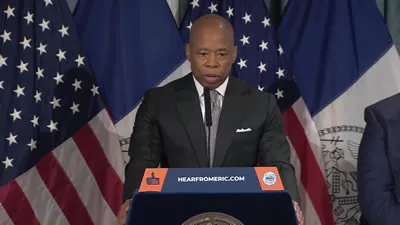Governor Kathy Hochul has unveiled the completion of the Living Breakwaters project, a $111 million investment aimed at bolstering coastal resilience along Staten Island’s shores. Designed to protect the Tottenville community from storm surges and erosion, this innovative infrastructure raises important questions regarding fiscal responsibility and its impact on local businesses and property values. Join us as we delve into the project’s significance and explore the concerns of Staten Island residents regarding this major investment in climate adaptation and community safety.
Governor Hochul Announces Completion of $111 Million Coastal Resiliency Project on Staten Island
Governor Kathy Hochul today announced the completion of Living Breakwaters, an innovative $111 million project designed to improve coastal resilience by decreasing the impact of storm waves and erosion along the coast of Staten Island. The 2,400 linear feet of breakwaters will mitigate risk to homes and businesses across the low-lying coastal community of Tottenville that experienced loss of life and property when powerful waves knocked homes off their foundations during Superstorm Sandy in 2012.
“New York is leading the nation in combating the climate crisis and building resilient communities,” Governor Hochul said. “As we have experienced several historic storms this summer, extreme weather is the new normal and it is vital that we adapt to our changing climate. Living Breakwaters exemplifies our long-term strategy to lessen the impact of storms, improve our shorelines and protect homes and businesses for generations to come.”
Living Breakwaters combines coastal resilience measures and habitat enhancement to create a network of nature-based infrastructure that is designed to reduce risk to the shoreline and improve the aquatic ecosystem of Raritan Bay. The project consists of eight partially submerged structures made of armor stone and ecologically enhanced concrete units that will break storm waves, decrease erosion and help restore the beach along Conference House Park.
Extensive hydrodynamic modeling was used to design the breakwaters to reduce the strength of waves reaching buildings and roads near the coast to below three feet in height. The breakwaters also slow sediment flowing along the shore to help reverse the impacts of decades of erosion, enabling the beach to build back and widen over time. The project also included a sand replenishment from Manhattan Street to Loretto Street, an area especially prone to erosion.
The breakwaters are also designed to create aquatic habitats, increase biodiversity and restore ecosystem benefits once provided by oyster reefs in Raritan Bay. They feature “reef ridges” — rocky protrusions on the ocean facing sides of the breakwaters — and “reef streets”, which are the narrow spaces between the reef ridges. These and other features increase habitat complexity and offer opportunities for diverse marine life to thrive. Wildlife has already started to inhabit the breakwaters including shore birds, seals, crabs, mussels, barnacles, sea sponges and a variety of fish species. Live oyster installation is expected to be completed by 2027.
The project was a winning proposal from the Rebuild by Design competition, a response to Superstorm Sandy launched by the U.S. Department of Housing and Urban Development (HUD) in 2013. The project is supported by $97 million of the HUD Community Development Block Grant Disaster Recovery funding and by $14 million from a direct capital allocation in the FY 2022 State Budget. It was administered by New York State Homes and Community Renewal’s (HCR) Office of Resilient Homes and Communities, a permanent office which assumed the portfolio of the Governor’s Office of Storm Recovery in 2022.
Living Breakwaters was proposed and designed by a team of landscape architects, engineers and ecologists led by SCAPE Landscape Architecture. The team worked with the New York City Department of Parks and Recreation (NYC Parks) to review the proposed outcomes and ways to monitor the shoreline change over time. NYC Parks supported access and education efforts both for the project construction and the oyster growing efforts that will continue.
Living Breakwaters complements New York’s efforts to mitigate climate change by achieving economy-wide carbon-neutrality by 2050 and is an example of HCR’s investments in sustainability and resilience including long-term recovery efforts for Hurricane Ida, providing funding for clean energy projects in affordable housing, assisting residents with weatherization of their homes among other initiatives.
Senate Majority Leader Chuck Schumer said, “Thanks to a $97 million federal investment via HUD’s Community Development Block Grant and a commitment to bolstering coastal resiliency in the wake of Superstorm Sandy, the completion of Living Breakwaters coastal resiliency project off the coast of Staten Island will bring much-needed protection and peace of mind to the Tottenville community. Living Breakwaters will protect the Tottenville community by reducing storm waves and combatting erosion. I’ll keep fighting to improve coastal resiliency and restore shorelines to help combat future flooding in Staten Island’s communities and across New York.”
New York State Homes and Community Renewal Commissioner RuthAnne Visnauskas said, “This $111 million investment is an innovative way we can diminish many of the dangerous effects of a changing climate. The 2,400-foot breakwater structures will reduce the strength of waves coming to shore, help combat erosion and enhance the local marine life at the same time. Under Governor Hochul’s leadership, New York is improving resiliency to help residents deal with climate change-related storms. We thank our project team and local community leaders for their dedication to reducing risk to the Tottenville shoreline.”
New York State Department of Environmental Conservation Interim Commissioner Sean Mahar said, “Improving the resilience of our coastlines is a critical part of New York State’s sustained and wide-ranging efforts to combat climate change and extreme weather like Superstorm Sandy. The Living Breakwaters project utilizes a variety of physical barriers to help reduce storm surge and erosion, protect homes and neighborhoods and support the restoration of local beaches and natural ecosystems. With Governor Hochul’s continued leadership and working closely with State agency partners and local communities, DEC remains committed to advancing critical projects like Living Breakwaters to protect New York’s coastal communities.”
New York City Parks Commissioner Sue Donoghue said, “Living Breakwaters is an incredible example of innovative, ecological design in response to climate change. We’re committed to advancing New York City’s resiliency so that our communities can thrive and enjoy our shorelines well into the future.”
Assemblymember Michael Reilly said, “I want to thank our partners throughout state and local government whose efforts these past several years helped shepherd this project to completion. Today, our Tottenville community is more resilient than ever before, and the ecological benefits that the Living Breakwaters will bring to all of Staten Island will have an impact for generations to come.”
New York City Councilmember Joseph Borelli said, “I am happy to see this shoreline protection project come to a close and I look forward to seeing the new marine life attracted to this area.”
SCAPE Landscape Architecture Founding Principal Kate Orff said, “Climate adaptation for the next century requires bold thinking on how people and nature can coexist in cities, and resilient design that combines nature-based infrastructure and community stewardship. Living Breakwaters revives our harbor ecosystems, reduces risk and inspires action. This project has been 10 years in the making and has involved hundreds of dedicated collaborators and community members. I’m excited to build on what we’ve learned together to accelerate implementation of nature-based infrastructure at many scales to meet the moment.”
New York State’s Nation-Leading Climate Plan
New York State’s climate agenda calls for an orderly and just transition that creates family-sustaining jobs, continues to foster a green economy across all sectors, and ensures that a minimum of 35 percent, with a goal of 40 percent, of the benefits of clean energy investments are directed to disadvantaged communities. Guided by some of the nation’s most aggressive climate and clean energy initiatives, New York is advancing a suite of efforts — including the New York Cap-and-Invest program (NYCI) and other complementary policies — to reduce greenhouse gas emissions by 40 percent by 2030 and 85 percent by 2050 from 1990 levels.
New York is also on a path toward a zero-emission electricity sector by 2040, including 70 percent renewable energy generation by 2030 and economy-wide carbon neutrality by mid-century. A cornerstone of this transition is New York’s unprecedented clean energy investments, including more than $28 billion in 61 large-scale renewable and transmission projects across the State, $6.8 billion to reduce building emissions, $3.3 billion to scale up solar, nearly $3 billion for clean transportation initiatives and over $2 billion in NY Green Bank commitments.
These and other investments are supporting more than 170,000 jobs in New York’s clean energy sector as of 2022 and an over 3,000 percent growth in the distributed solar sector since 2011. To reduce greenhouse gas emissions and improve air quality, New York also adopted zero-emission vehicle regulations, including the requirement for all new passenger cars and light-duty trucks sold in the State to be zero emission by 2035. Partnerships are continuing to advance New York’s climate action with more than 420 registered and more than 150 certified Climate Smart Communities, over 500 Clean Energy Communities, and the State’s largest community air monitoring initiative in 10 disadvantaged communities across the State to help target air pollution and combat climate change.
September 27, 2024 Albany , New York
Here are two questions from a Republican perspective regarding Governor Hochul’s announcement on the completion of the Living Breakwaters project:
- Fiscal Responsibility: Given that the Living Breakwaters project cost $111 million, how does the state plan to ensure that such large expenditures are justified in terms of effectiveness and long-term benefits, particularly in a time of budget constraints and rising taxes for New Yorkers?
- Impact on Local Businesses: While the project aims to protect coastal communities, what specific measures are in place to evaluate its impact on local businesses and property values? How can the state ensure that these investments do not lead to unnecessary regulations or restrictions that could hinder economic growth in Staten Island?
Sources: Midtown Tribune, NY State Gov
Big New York news BigNY.com










